As an Amazon Associate I earn from qualifying purchases.
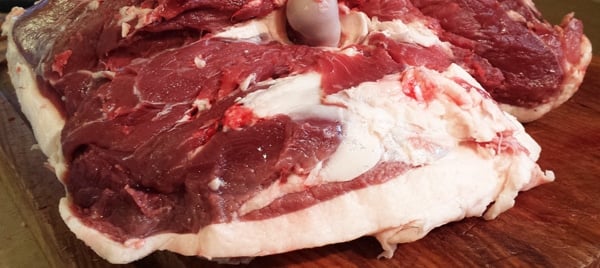
I’ve long been a proponent of using deer fat in cooking. In fact, it’s one of my more favorite hunting myths to puncture when I talk to other hunters about game cookery. After all, it just makes sense that the fat on venison would taste good, especially if you are hunting either in the Grain Belt or wherever there are a lot of acorns: Most of us like the taste of grain-fed beef, and acorn-fed pork is some of the finest in the world.
Still, the majority of sources on the subject will tell you to remove any and all fat from your deer, calling it gamy or “strong” or otherwise unpleasant. Even the normally sporty The L.L. Bean Game and Fish Cookbook, which I respect a lot, says venison fat is gnarly — but, oddly, that moose and caribou fat isn’t. Some critics skip the flavor aspect altogether and stress how quickly venison fat goes rancid, even in the freezer.
There has to be something to this, right?
Turns out, there is — to both sides of the deer fat debate. Here’s what I know about the science and composition of fat in venison, and hopefully this will help you decide whether you want to keep the fat on your deer or trim it off.
Let me start with the obvious: Deer, elk, antelope, caribou and moose are all separate critters, with different diets among species compounded by both regional differences — the menu for an Arizona cous deer is nothing like that for an Iowa white-tailed deer, for example — as well as individual differences; one buck may love acorns, while the one eating next to him prefers grass. Given this, any universal ideas about the flavor or composition of deer fat should be taken with a grain of salt. Being wild, variability is the name of the game.
Nevertheless, all our “deer” are cervids, ruminant cousins of sheep, goats and cattle. And ruminants tend to have a narrower range of flavor differences than do animals with a less intense digestive system and/or a wider diet.
Ruminants all eat grass, other plants, nuts, and only rarely animal protein; there’s that oft-quoted story about deer eating baby birds or eggs. Contrast that with ducks and bears and wild pigs, which can run the gamut from abominable to sublime depending on what they’d last been eating. A salmon-eating bear is foul, a berry-eating one fantastic. Deer are deer, with real but more subtle differences in flavor.
OK, you’ve shot a deer. Now what?
First off, when you gut the deer you will see a skein of lacy fat surrounding its entrails; this is caul fat, and it is fantastic for making crepinettes or British meatballs. (More on that in another post.) I save it, vacuum-sealing it and freezing it straight away.
Next you will often see a lot of fat around the kidneys as well as some stuck here and there within the gut cavity. This is suet. I tend to toss it. Why? Rule No. 1: Body cavity fat (suet) is always harder than that on working muscles. If you are a soap or candle maker, this stuff is golden. If you want to eat it, well, it’s really waxy and won’t melt until it hits about 120°F.
By comparison, rendered wild duck fat melts around 68°F. Some people like beef and lamb suet, but not me. Birds really love it, though, especially in winter. So if you live in a place with cold winters, save your deer suet for them.
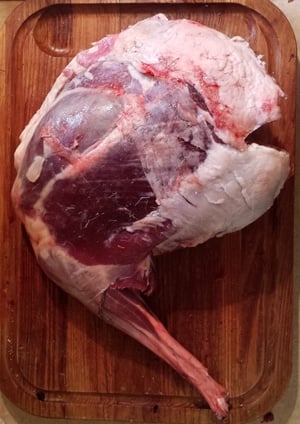
Question: Are you hanging your deer or not? This is a big one. If you intend on hanging your deer in the hide, you can still use the fat. Not a lot of people do this because it requires very cold temperatures. If, like most people, you hang your deer after it’s been skinned, you probably want to trim off at least top layer of fat. The reason why gets us into what venison fat is made of.
Good data is hard to find on this subject, but it does exist. I managed to read about a dozen scientific papers on venison fat — yeah, I know, light reading, right? — mostly from New Zealand, Scandinavia and Great Britain, although there were a few from the United States, too. They all come to the same conclusion about deer fat:
- It is high in Omega-3 fatty acids, due mostly to a diet of grasses.
- It may have the highest levels of stearic acid in any food animal, for reasons not entirely clear.
- Deer fat is more saturated than fat from beef, lamb or pork.
Saturated fat is bad, right? Yes, but the kind most people are talking about is palmitic and myristic acid, which are present in all ruminants, including deer. As it happens, stearic acid is an anomaly. Diets high in stearic acid actually decrease the “bad” cholesterol levels in people and may even increase the “good” cholesterol, too.
At the very least it’s cholesterol neutral. Beef has some stearic acid, lamb more. But you know what has even higher levels of it? Chocolate. Crazy, eh?
So, back to the question of hanging your deer. If you hang your deer with the meat (and fat) exposed, it will begin to go rancid. The reason has to due with temperatures above freezing, exposure to the air, which causes oxidation, and because fats high in omega-3 fatty acids tend to go rancid easier. This is why people say venison fat goes rancid quickly.
The quicker you can cool the deer carcass and the faster you can get the meat away from oxygen and into refrigeration, the better tasting the fat will be, and the longer it will keep in storage.
A word on taste. Flavor in deer fat is all about meat care, which we just discussed, and diet. A deer that had been pillaging an alfalfa field or a cornfield will have fat that tastes a lot like beef or lamb fat. A deer eking out a living in the Great Basin or the desert might not have any fat at all, and what fat there it may well taste unpleasant. How can you tell? Render some in a pan with a little water, and if it smells good it is good. Your nose doesn’t lie.
That said, fat is the primary carrier of individual flavor in animals, not lean meat. I can feed you a series of meats, and if they are all cooked the same way and are all devoid of fat, they’ll all taste similar. Color and texture are your only clues, and if you blindfold someone it will become virtually impossible to tell the difference. Don’t believe me? Try it on your friends. You’ll be surprised.
Venison fat has flavor. There, I said it. If you like the flavor of lamb or beef fat, you’ll like venison fat. Period. Others might find it too strong for them. And that’s fair, but I am betting it isn’t the flavor of the fat that’s got them. It’s the mouthfeel.
And this brings us to the final issue with deer fat: It can coat your mouth.
Blame that stearic acid. You know why you love chocolate so much? One big reason is because that lovely flavor coats your palate. Only when it’s deer fat the experience is something else entirely, and not altogether pleasant. A little is fine, largely because it carries that nice venison flavor.
But when I make sausages from 100 percent venison, they taste fantastic but I find I need to drink something acidic, like red wine, to cut that coating. Is it a stopper? No. But it’s something to be aware of.
So. Bottom line. If you want to eat your deer fat, I’d follow these guidelines:
- Save it from deer that had been eating nice grasses, grains or acorns. Remove it in deer from sagebrush or sketchy areas.
- Toss the suet unless you want to make candles, soap or feed the birds.
- Slice off any fat that was exposed to air after you’ve hung the carcass.
- Never use deer fat in dry-cured salami. Uncooked deer fat is nasty and chalky.
- Use deer fat sparingly in sausages and burger. A little adds a lot of flavor, a lot can give you that “coated mouth” thing
- Eat cuts with a lot of venison fat, burger or sausages made with venison fat within 3 to 6 months, as the fat will go rancid slowly even in the freezer; it’s a little like salmon fat, which, when thawed, gets that nasty smell we all hate…
- Venison fat crisped on a roast or steak is awesome. Period.
Hope this helps you out this deer season! What have your experiences been with deer fat?
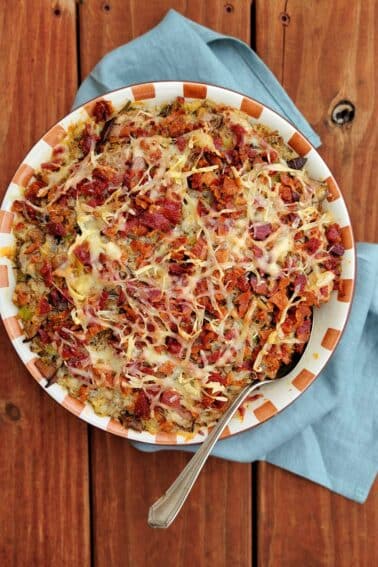

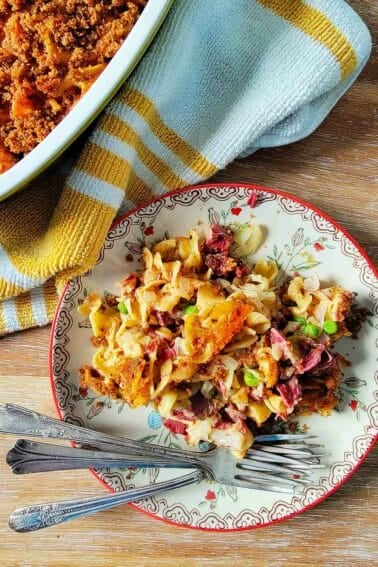
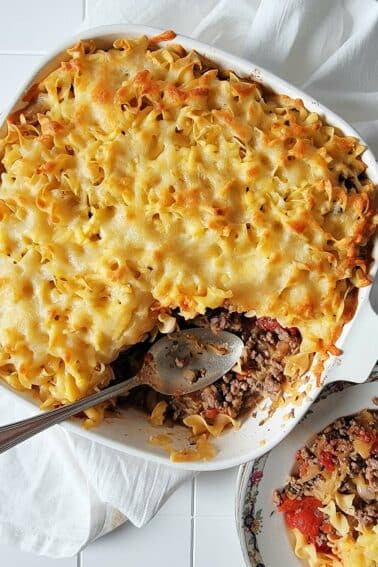
Hank, just made a batch of summer sausage using an 80/10/10 (deer/pork shoulder/deer fat) and it’s the best I’ve made yet. Next I am going to eliminate the pork all together.
By the way you may have a typo above… “If you hang your deer with the skin (and fat) exposed, it will begin to go rancid.” I believe you meant “meat”, not “skin”
Thanks Hank!
-Tim
Tim: Thanks for the catch! Fixed it.
Baby boy (his X power is cooking) just did back straps from last year. Cooked whole, not quite sure how (but not overdone), then sliced ~5/8″. Wonderful. But it had a thinish layer of what seemed to be fat over it, at least on one side. Here’s the thing: It wasn’t at all like the crayon-consistency horror that usually rises to the top of, say, a crock pot roast; it was wonderful consistency and flavor like a thin layer of pork fat. So observation/question: Besides the suet (which I always nix all of) it seems like there’re more different qualities of fat in other places. Maybe so? I believe this fat may have been that thin layer on that very thin layer over the backstrap proper and the skin (if so, I will never again try to remove that layer but will bone out the backstrap with that intact). Guide us, Landru!
Also, the only glands I’ve ever noticed are in that triangular underarm slab (heh). Would love to know more about them.
I retired after many years of managing a meat market in a grocery store. Over the years I answered many service bell calls where the customer would tell me they had been given some deer meat by a friend and wonder if I could tell them how to cook it and get rid of the gamey taste. I always told them their best bet was just to toss it out and buy themselves a pack of ground beef.
I love venison and the fact that it has a different taste from other meats. I have had steaks from fat young does that rivaled any beef I ever had. Tossed on the grill, left rare, and seasoned with salt and pepper only, they were a gourmet delight and the tastiest part was the sweet delicious fat.
I don’t try to make my pork or lamb taste like beef and I am quite happy to eat venison that tastes like what it is. Getting ready to share a nice buck with my son-in-law and looking forward to some good eating.
I’ve been harvesting deer for over 35 years and have done all of our own processing. My dad and all his hunting buddies would always hang a deer with the skin on and let it ‘air’ out and cool down naturally. I totally believe in this. I think it lets the meat age a little before processing it. We try to cut off the thick parts of fat and definitely the thin sticky fat comes off. We don’t cut it all out. Downside is that the fat builds up on the grinder blade and it has to be cleaned off during your grind. We will grind 200lbs or more. We mix 10% beef suet with our venison when we make hamburger meat just so it’s not so dry when you cook it. That has turned out well for us. But I agree, don’t cut out all of the fat.
Here’s my recipe for shanks.
Cut cross muscle about inch thick, put all in heavy pot, add 1 head! of cut or crushed garlic, and 1-2 tbsp! of black pepper, cover with red wine (up to one bottle), salt to taste. Cook on slow for 6-8 hours. Serve hot on stale bread, potatoes, polenta.. also great next day cold, it sets from all the gelatin.
Italian recipe, there few names for it – peppery stew etc.
Does using a vacuum sealer extend the life of burger mixed with deer fat?
Rob: It’s been my experience that yes, it does extend the life of the burger. Still gets an “off” flavor after a year, though, where burger mixed with pork lasts longer.
I have a book called “Venison From Field to Table” that has a discussion on deer fat in it that I have found holds up well for the AZ mule, Coues’, and elk that I process. The basic point of it is hard fat bad, soft fat good. Here in the dry hot Southwest I always skin my animals and get them on ice ASAP. Letting them hang isn’t an option even when it is cold because they dry out so badly. I grind a large percentage of the meat as that is the stuff I tend to use most. I trim off the hard fat or tallow, and use all the soft fat. I don’t worry about a little hard fat if it slips in, no big deal. I have had zero issues and all good experiences with this method. I once used all the tallow for my burger and sausage and discovered the mouth coating thing and found that off-putting. I also think the hard fat goes rancid more quickly even without hanging.
I notice the shank was still on the leg. The past few years I have saved my shanks for braising just like a lamb shank. I have found it to be the best use of the shank. Grinding it is a waste since all the tallow clogs up the grinder. The shank on the forelegs aren’t necessarily worth the effort to braise since there’s not much meat, but certainly the hind shanks.
Jesse: Um… yep. If you look on this site I have an entire section dedicated to shanks.
We take the scrappy unusable meat and scraps of liver (oh, how we love that liver!) and hard fat from venison carcasses, grind it up, cook the meat and melt the fat down in a big cast iron dutch oven, and mix it with oatmeal. The dogs adore it, and we use it as an energy-booster during bird-season.
Our biggest experience with cooking with venison fat is when we slow-cook the ribs. I do trim as much fat off as I can, because on white-tail there’s a LOT of fat there. On the pronghorn John just brought home? none at all.
Where are those glands located. I know about the ones on the inside of the hind legs, but would like to know if there are more, and where. Thanks!!!
Donald: They’re kinda all over. I usually find them wherever the fat deposits are thickest – that’s my indicator to slice it in half to check.
I might be willing to try a crispy fat cap but the glands have got to go. If you know how to open it up like on the article photo, no problem. Roasted intact and whole like on Facebook promo, not sure about.
You said not to cure it, but how about lardo?
Christopher. No lardo. It’ll taste like a salty candle.
David: Yeah, the glands have got to go. Trimming the fat cap will reveal them and still leave some on the meat.
One point of contention: saturated fat from free-range animals is actually good for you. Don’t worry about your arteries when you chow down on venison sausage.
Good point, yer Dudeness.
In the process of making demiglace from my grass-fed whitetail, I put the pot in the fridge overnight. Scraped all the fat off the top, cooked it down again to put it in a more useful container. Used it the next evening to fry some Jaeger Schnitzel. I thought it turned out great!
suet makes wonderful cosmetics (cuticle cream, lip balm, mascara), soaps and wood polish. just make sure you keep it below 70 degrees.
I will experiment this fall with Venison fat. I like the crepinettes concept. Thand for shedding light on this.
One quick question, do you recommend eating/cooking with the cap fat that covers the back and hind end? That stuff seems pretty waxy and nasty to me.
Yep, that’s the fat that is a lot like lamb fat. Yep, it’s hard, but tasty. I use it in moderation, and leave a little on roasts.
What a fantastic article! I live in NC, and have just recently begun to question what I’ve always been told about deer fat being ‘gamy,’ since our local deer tend to eat field corn and acorns. Last year I tested the waters by making stock out of the marrow bones and it turned out great!
I’m definitely going to have to try a whole venison roast with some fat left on to crisp up. Sounds delicious!
How about rendering and preserving it like duck fat?
It gets really, really hard. Like candle wax. Definitely edible and often tasty, but hard to work with.
I generally cut most of it off and I live in Iowa with plenty of grain fed deer. I do have 2 whole shoulders in my fridge that I plan to roast/braise that I have not trimmed much of the fat off the exterior and since they are whole whatever is between the muscles is going to be there. I think that it will add to the the experience of cooking the front shoulders whole. This particular deer didn’t have much of a fat cap on her back/hind end, but between the cuts in her rump she had A LOT of fat.